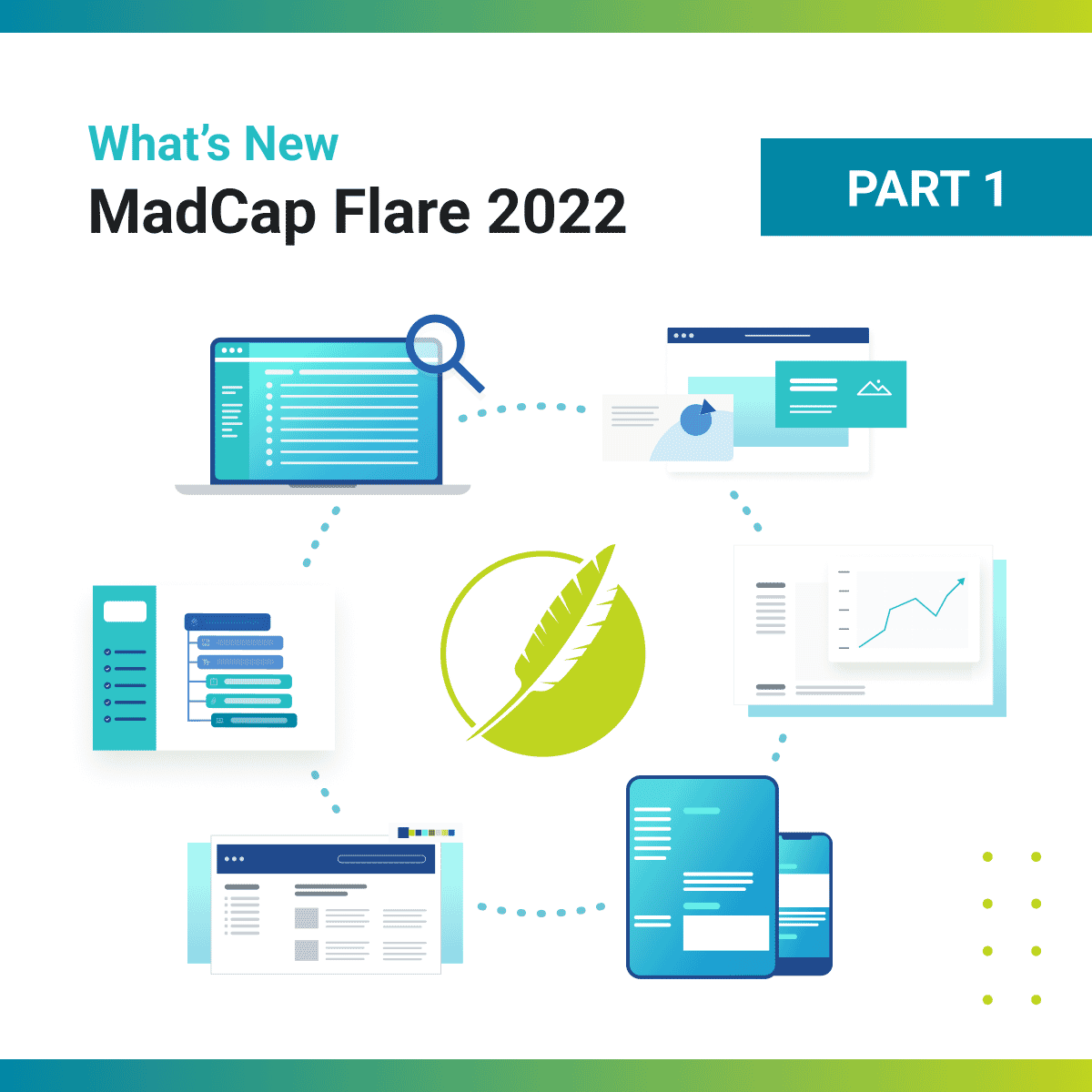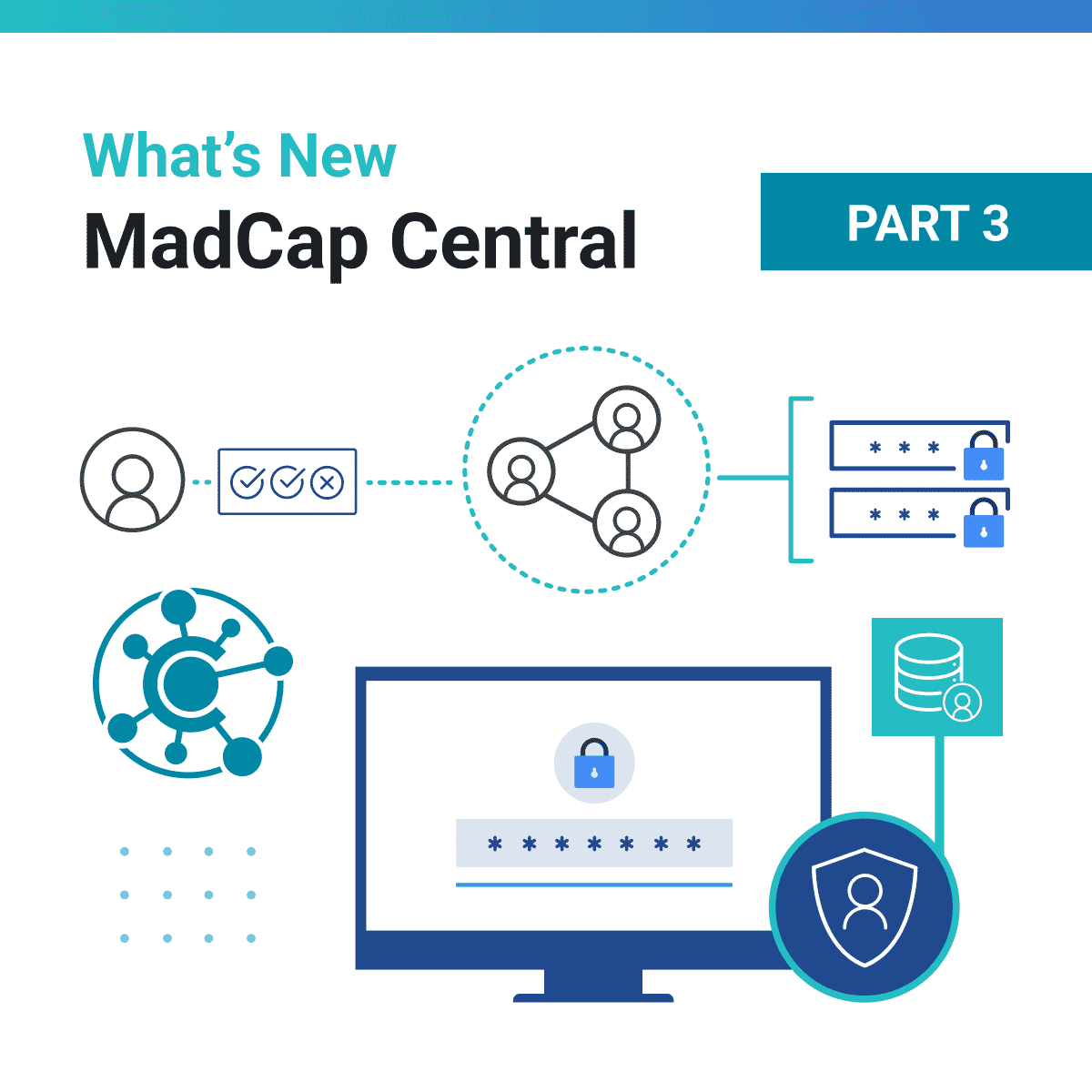With the latest release of MadCap Flare 2022 and MadCap Central, we’re excited to add new features and enhancements to streamline content delivery. In part two of this three-part series, we will take a look at the enhancements to micro content in this release.
What is Micro Content and Why Is It A Big Deal?
What is micro content? Micro content can be text, images, video, audio (or sometimes a combination of these things) that can be consumed by a reader in about 10-30 seconds. Micro content is all around us, and we all have become accustomed to it.
Our friends at Google really put micro content on the map, and they have done a great job of ensuring that you don’t really have to work too hard to get an answer to the question or keyword you type in their search box. When you search in Google, micro content appears in the form of rich results. For example, you may see a featured snippet box at the top of the search results, or a knowledge box on the right with promotional information, or maybe a carousel of relevant sales, marketing, or task-related videos. These are all examples of micro content.
This search experience should be the same for HTML5 content that you generate out of MadCap Flare. As a content author, you produce great content, and most likely a lot of it. Using micro content in your output ensures your end users don’t have to work so hard to find that one thing they need right at that moment.
Up until now, micro content could be displayed as featured snippets in search, which appear at the top of the HTML5 output search results. For your end user, it provides a lot of benefits, most notably it provides a way to display curated information that could answer your end user’s query in about 10-30 seconds, eliminating the need to wade through many search results.
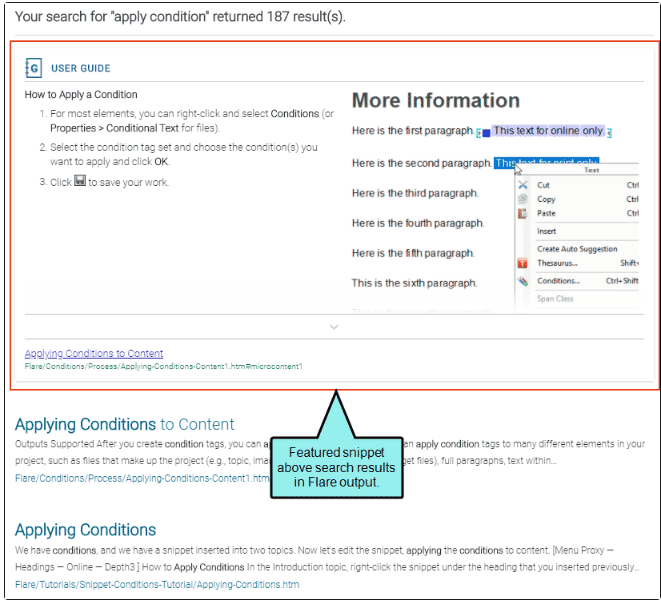
Example of micro content as a featured snippet in search results - Flare 2021 r3
New Containers and Options for Displaying Micro Content
Flare 2022 goes beyond displaying featured snippets in search. New options to display micro content in a new Knowledge Panel, and three new proxies (FAQ, Knowledge, and Promotion) means you can provide even more relevant micro content to end users in topics and in search, and perhaps help drive engagement with other products or services you offer.
Knowledge Panel
The new Knowledge Panel offers an additional container to display micro content in search results. Previously, the best match was displayed in the featured snippets search container. Now, you can use a filter to specifically determine which micro content might display, how many results you want to display, and how it is presented for even more control.
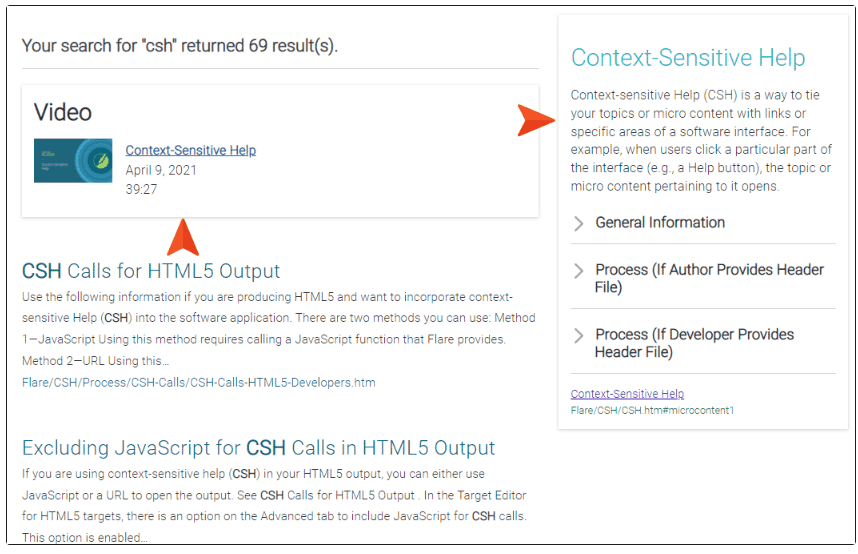
Example of of filtered micro content as a featured snippet in search and the new Knowledge Panel
New Micro Content Proxies - FAQ, Knowledge, Promotion
Using the new Knowledge Panel and enhanced featured snippets search container is one of the easiest ways to implement micro content. By using more advanced micro content proxies (FAQ, Knowledge, Promotion), and often when paired with meta tags, you have even more choices and control over your micro content.
Promotion Proxy
For example, you might use a Promotion proxy to display information about a new product or service that is highly contextual to a particular topic (or set of topics) in your output. With Promotion proxies, the results that are displayed in the container are dynamic, and generated at runtime in the browser using the search engine.
In Flare’s online Help, if you visit a topic about translation or localization, you may see a container to the right of the topic content showing information about a related product (i.e., MadCap Lingo) that may help the user reading about this subject. If you visit the page another time, it may show information about an upcoming webinar on translation, or information about our MadTranslation service
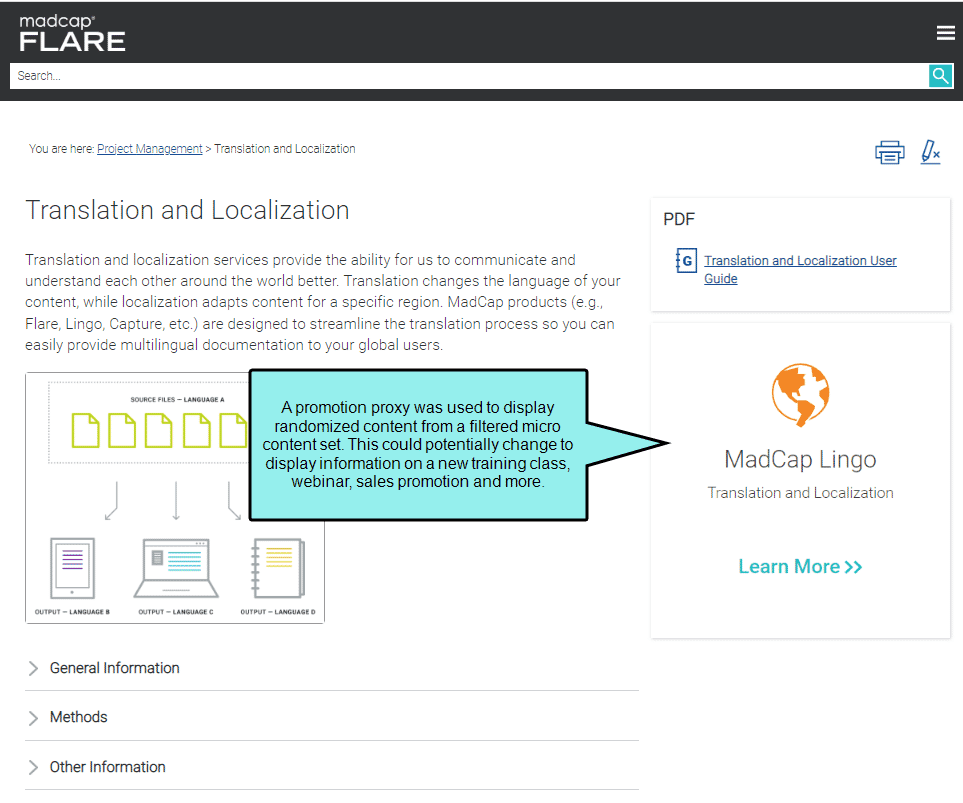
Example of a Promotion proxy in action
Knowledge Proxy
You might use a Knowledge proxy to display filtered micro content in a topic or in a search results page. It could be useful to display information about a person, company, technical specification, related tasks, and more. Like Promotion proxies, the results that are displayed in the container are dynamic, generated at runtime in the browser, using the search engine.
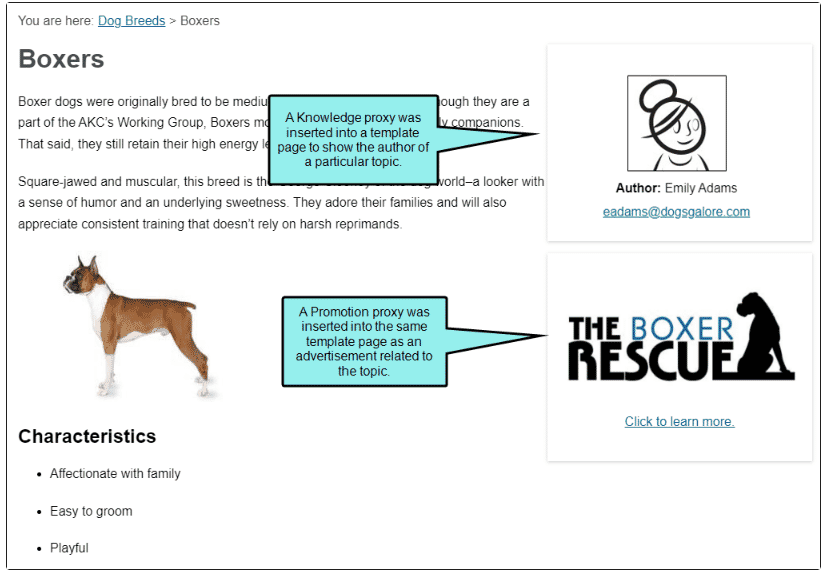
Example of a Knowledge proxy in action
FAQ Proxy
You might use an FAQ proxy to generate a list of phrases and responses from a specific micro content file set in topics. The micro content that is displayed in the container is static and compiled when the target is built. They are designed to be included in topics or template pages, not in search results. Results can be displayed alphabetically if needed, and an option to generate FAQ structured data is available if you want your micro content to be potentially included as a rich result on a Google search page. This is similar to the “People also ask” content you see when you do a Google search.
Since the content displayed is predetermined, it is also ideal for repurposing that content in other outputs like PDF and Word.

Example of an FAQ proxy in action
While this type of proxy is ideal for displaying traditional FAQs, it can be used for other purposes as well. In MadCap Flare’s online Help, an FAQ proxy is used to display links to related resources (PDFs, videos) on the right side of topics. Obviously, these resource links are not FAQs. However, the characteristics of that proxy (e.g., static, ability to sort in alphabetical order) made it a better choice than the other two proxies.
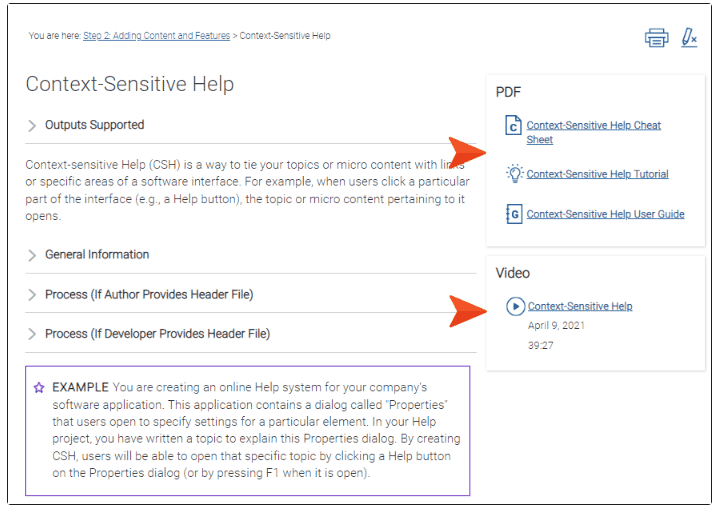
Example of an FAQ proxy in action
The FAQ, Knowledge, and Promotion proxies are named for the types of purposes that best fit their design. However, don't let the names limit you. Instead, think of these proxies as containers that hold whatever kind of information you want. While the three proxies have similar characteristics, they have unique ones as well, so let those help drive your decisions. For more information on these new proxies, example use cases, and a comparison of their characteristics, visit this topic in the online Help.
These new options for displaying micro content may feel overwhelming at first, so have fun with them and practice! Here are some new resources to help get you started putting them to use in your own projects:
For more information on what’s new with all of these micro content enhancements, including more examples, visit this topic in Flare’s online Help.
In part three of this three-part series, we will review enhancements to skins, source control, and MadCap Central.








